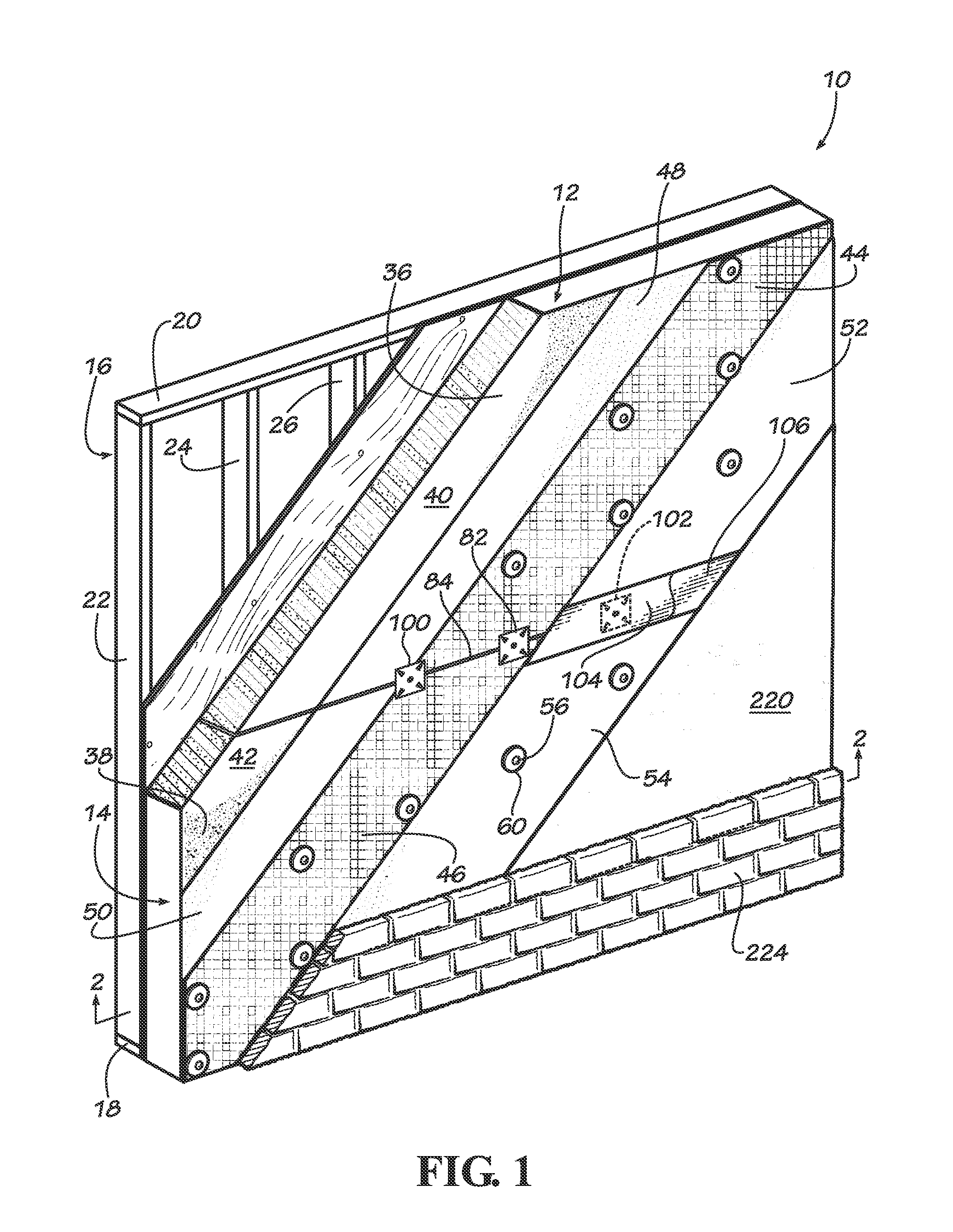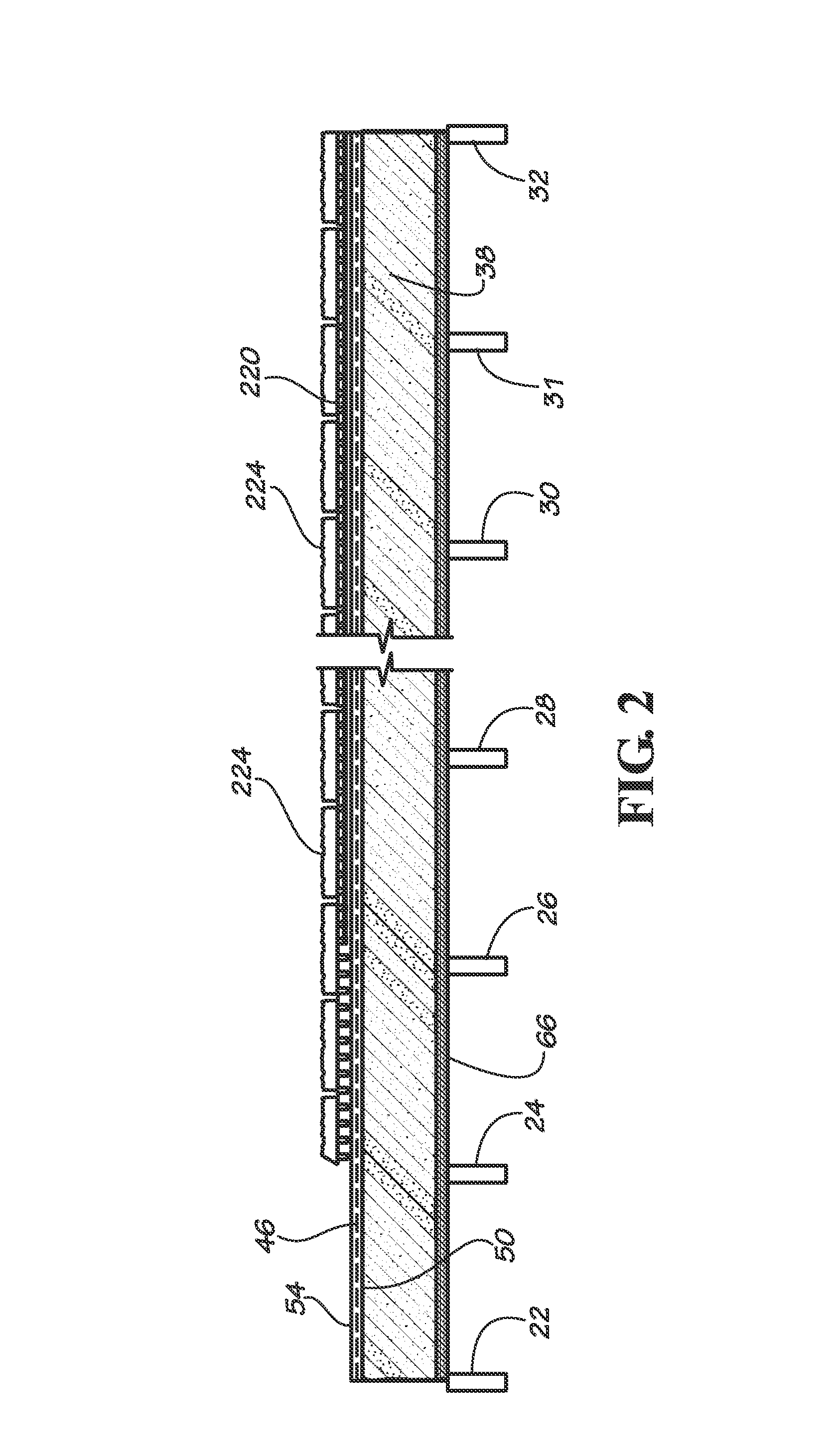Insulated reinforced foam sheathing, reinforced vapor permeable air barrier foam panel and method of making and using same
a technology of vapor permeable air and insulating foam, which is applied in the field of insulation reinforced foam sheathing, can solve the problems of damp batt insulation losing most, if not all, insulating properties, energy loss occurring primarily through the building envelope, etc., and achieves the effect of increasing or decreasing vapor permeability and varying the permeability
- Summary
- Abstract
- Description
- Claims
- Application Information
AI Technical Summary
Benefits of technology
Problems solved by technology
Method used
Image
Examples
Embodiment Construction
[0050]Referring now to the drawing in which like numbers indicate like elements throughout the several views, there is shown in FIG. 1 a disclosed embodiment of an insulated sheathing system 10 in accordance with the present invention. The insulated sheathing system 10 includes a first composite insulated panel 12 and a second composite insulated panel 14 attached to a conventional stud wall 16. The stud wall 16 comprises a horizontal bottom track 18 and a horizontal top track 20. Disposed between the bottom track 18 and the top track 20 are a plurality of vertical studs 22, 24, 26, 28, 30, 31, 32. The vertical studs 22-32 are typically made from 2″×4″ or 2″×6″ pine and usually in lengths of 8 feet, 9 feet or 10 feet. The vertical studs 22-32 shown in FIG. 1 are 2″×4″×8′. Although the vertical studs 22-32 are shown as being made from wood, other materials including, but not limited to, metal or composite materials can be used for the vertical studs.
[0051]Each of the composite insula...
PUM
 Login to View More
Login to View More Abstract
Description
Claims
Application Information
 Login to View More
Login to View More - R&D
- Intellectual Property
- Life Sciences
- Materials
- Tech Scout
- Unparalleled Data Quality
- Higher Quality Content
- 60% Fewer Hallucinations
Browse by: Latest US Patents, China's latest patents, Technical Efficacy Thesaurus, Application Domain, Technology Topic, Popular Technical Reports.
© 2025 PatSnap. All rights reserved.Legal|Privacy policy|Modern Slavery Act Transparency Statement|Sitemap|About US| Contact US: help@patsnap.com



